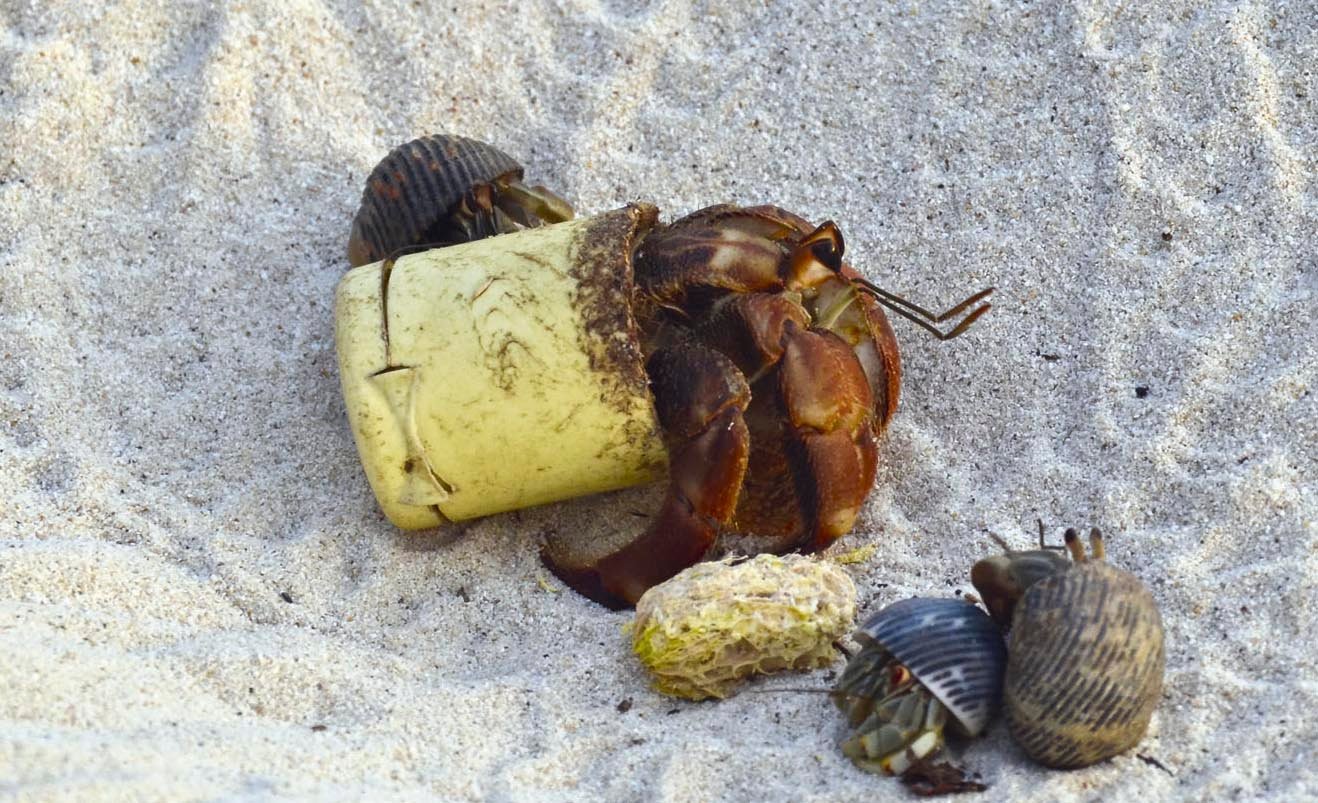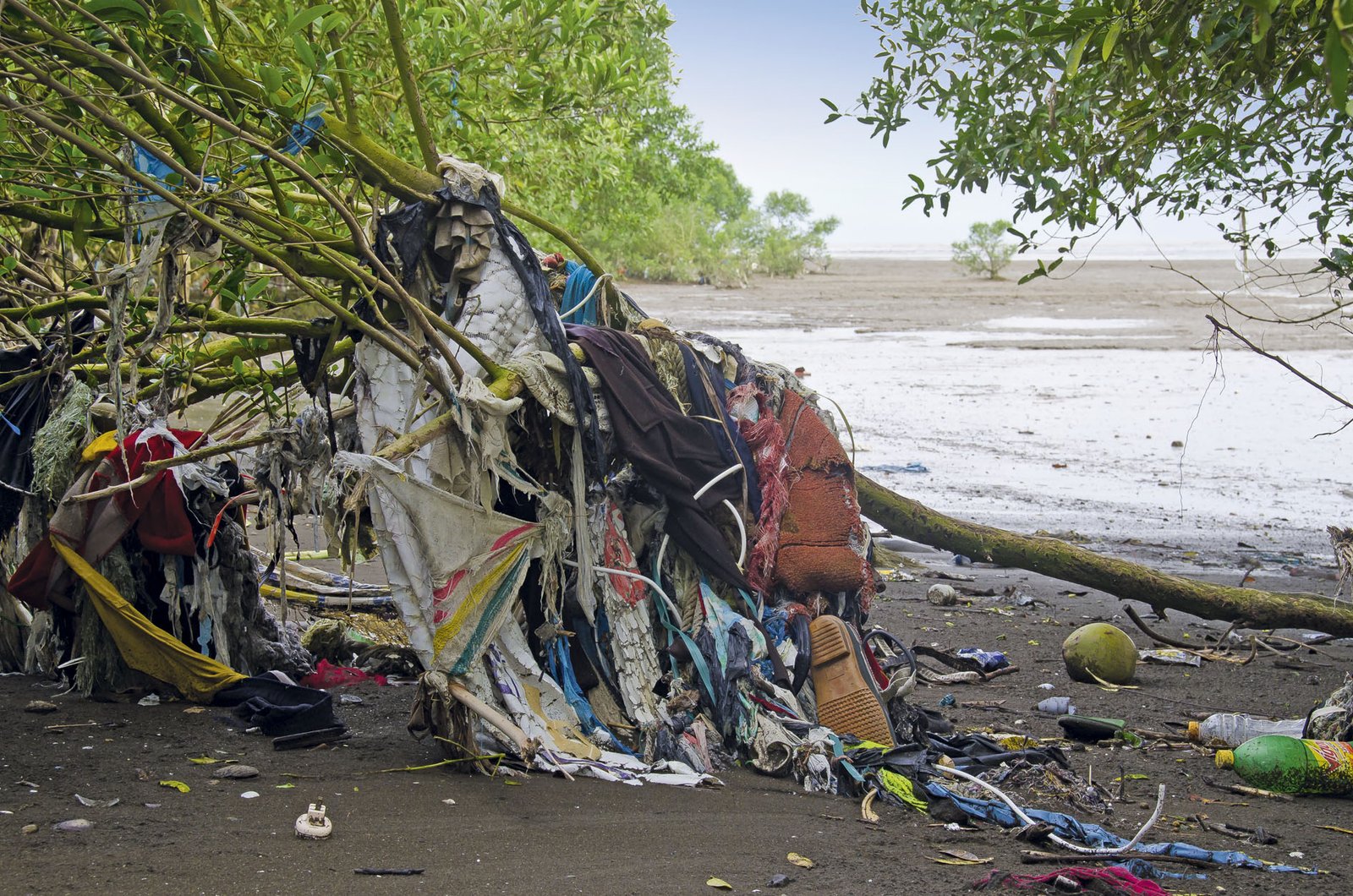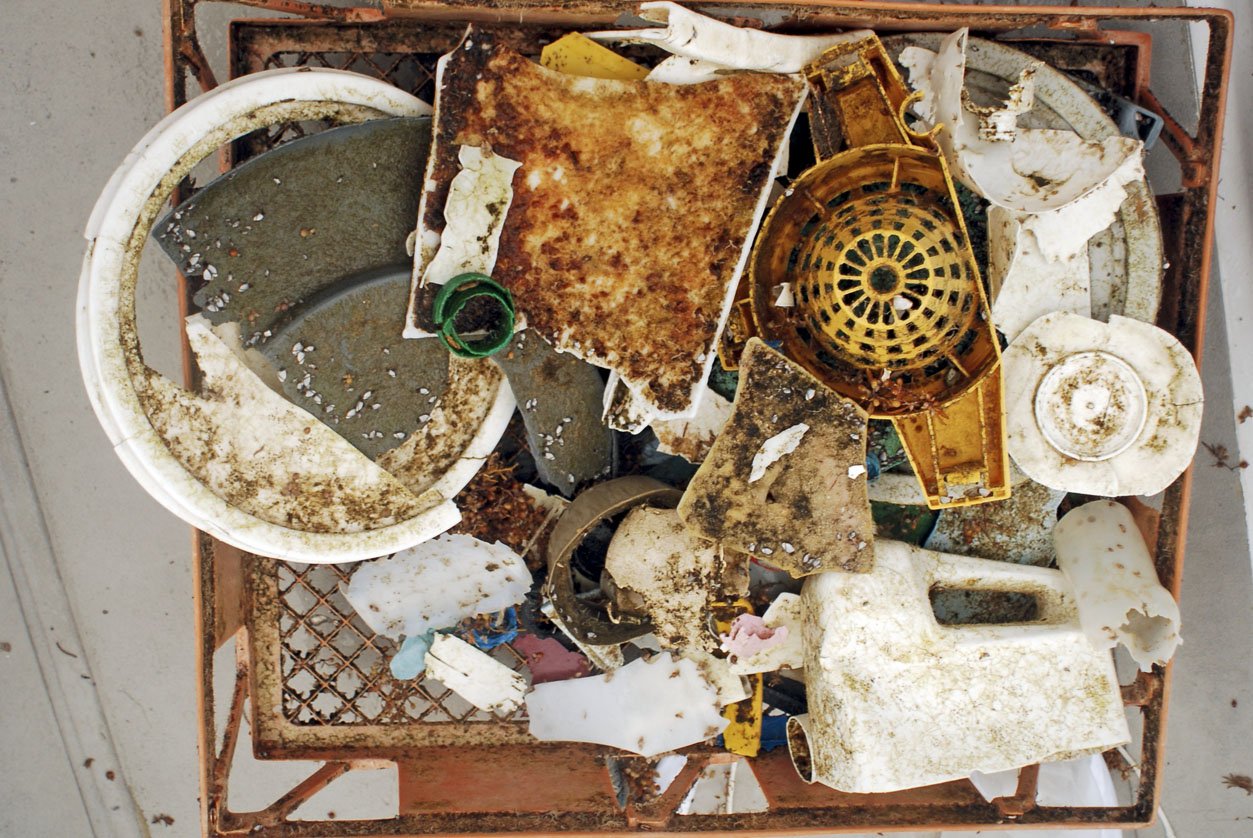

The Threat Posed by Plastic Trash
By: Jonh Vanroar
Photos: Carlos Gómez
About five years ago, an enormous island of plastic bottles, among other trash, was found floating in the Pacific Ocean. The discovery of the “island,” estimated to cover approximately 270,000 to 5,800,000 square miles (the figures vary depending on how the trash is measured), came as a sad surprise to the world, and especially oceanographers and marine biologists. Shortly afterward, the picture worsened when it was discovered that there are five of these huge masses of trash floating in the world’s oceans.
In recent decades, we have learned with increasing certainty how we humans affect nature. The mass media has begun talking about climate change as the public grows more and more interested. There have been many discussions on acidification of the oceans and the presence of plastics in ocean gyres, but this issue has yet to become an everyday topic of conversation.
Ocean gyres are large systems of rotating ocean currents that are determined largely by gravity and the earth’s rotation. There are five large gyres: northern Atlantic, southern Atlantic, Indian, northern Pacific, and southern Pacific. Floating trash is pulled toward the center of these rotating currents, where it accumulates and creates “islands” of polluting waste.

The “5 Gyres” organization takes its name from these natural phenomena. For two decades, founders Anna Cummins and Marcus Eriksen, along with other associates, have educated the public about why trash accumulates in gyres; they hold talks at universities, make boat trips to the gyres with volunteers, and disseminate information on these rotating phenomena. This group believes that the solution is to completely stop using plastic and organize massive clean-up campaigns.
Stiv Wilson, a scientist with the group, says that the tides carry nearly 50% of the plastic trash in the gyres back to the coasts, so all of the trash eventually ends up on the beaches. He suggests that if we eliminate the source of the problem and then clean up the existing trash, there would be an enormous reduction in the amount of this trash, to the point that we might once again see completely pristine oceans.
These theories are why the public response to this problem is generally expressed in massive beach clean-ups. According to data from the global organization Ocean Conservancy, which carries out mass clean-up operations around the world, during 2013 plastic bottles were the third most frequently found object (1,065,171 pieces) and plastic bags were the fourth (1,019,902 pieces). Although plastic is not the only type of trash found in the oceans, it is the most harmful. The worst part is that the number of pieces of trash picked up by the Ocean Conservancy pales in comparison to the amount of trash still in the oceans.
For example, plastic and aluminum are known to be buried in the inaccessible ocean floor, but the amount has not been accurately calculated or investigated. Scientists and biologists send remotely-controlled submarines to investigate the ocean floor at depths of some 2,500 feet. We can see that our trash has won the race to the ocean floor: fishing nets festoon coral at extreme depths and brand names are clearly visible on discarded beer bottles. This trash has a negative impact on marine species. In fact, lab tests have shown that some sea cucumbers prefer to consume plastic rather than plankton. The effects have not been fully studied, but eating plastic can immediately kill the creatures, or sicken them and kill them slowly if they eat it in smaller quantities.


There are other important factors to be considered when we talk about “clean” oceans: it is not simply a matter of picking up bottles, bags, and cans; the biggest problem we face right now is that of microplastics, which are impossible to pick up. Microplastic is made up of particles smaller than plankton, and the primary consumers in the ocean food chain ingest it along with the plankton they eat. Plastic moves through the food chain all the way up to the fish and seafood sold to consumers around the world. People who eat this food from the sea inevitably eat microplastics without realizing it. “You immediately recognize what could happen if someone aims a gun at you, and the problem is limited in scope; however, plastic in the oceans is a problem on such a vast scale that it is difficult to perceive the dangers,” explains Ricardo Wong, from the Panamanian NGO PROMAR.
As this is a topic of worldwide interest, several groups of scientists are researching the problem and seeking solutions. While diving in Greece in 2010, high school student Boyan Slat was so startled to see more plastic bags than fish that he chose this topic as a school project. In his early years at university, he designed a system for removing plastic from the oceans. The device consisted of a central structure (in the shape of a manta ray) with two “wings” (two lines, each approximately 1,600 feet long, made of the same material as buoys) that would push floating plastic trash toward the center, where it would accumulate for subsequent removal.
Boyan sent his first design to some 250 entities, including several scientific institutes, journals, universities, and other organizations. Months passed with no reply, but he did become instantly famous on the internet when his design went viral on social networks. Seeing that his system for removing plastic from ocean gyres awakened enormous interest, he opened an account for donations to finance his project, setting a target of $80,000.


One of the most cogent arguments was presented by Stiv Wilson, who wrote an article for Inhabitat.com in which he tried to convince readers that Boyan’s idea of going to the gyres and picking up the trash was literally impossible. Rather, he suggested that the best way to solve this problem was to completely stop using plastic and wait for the trash to wash up on the beaches, to be picked up bottle by bottle. But since Boyan appreciated criticism of his work, he took the time to write a response that refuted every one of Wilson’s misgivings. To prove his point, he turned his objections into a talk similar to the TED Talk he had already given, and presented The Feasibility Study, a book of more than five hundred pages that not only addresses every criticism he received with an irrefutable argument, but does so in a book made of plastic recycled from the gyres (Wilson argues that the plastic in the gyres is so degraded that it cannot effectively be recycled).
While Boyan created the original design, his final version was put together by dozens of scientists —many with PhDs— based on several studies and incorporating every piece of constructive criticism (including those expressed by Wilson) received by The Ocean Cleanup team. The current version of the project retains the core of the original, but the new version employs an individual device in the shape of a tower that floats alongside the trash and uses a sort of conveyor belt to pick up the refuse; the plastic is then stored inside the tower until it can be removed and sent for recycling. Boyan’s team is now using the $2,154,282 donated to the project to build the first prototype of this system.


Nonetheless, as Wilson argues, even if the oceans are cleaned up, the problem must be attacked at the source: stopping the use of plastic is the only way to solve the problem once and for all. Some 8% of the oil extracted in the world is used to create more plastic, which is found in every supermarket and store. The root of the problem is that we use plastic as if it were “disposable,” when in reality nothing is disposable: everything remains here on Earth regardless of how much we wish to ignore it. The solution is necessarily multi-faceted, since any other type of measure will not address the cause of the problem.
In the United States, the state of California has banned the use of plastic bags in certain stores. The movement has been growing, and there may soon be a statewide ban on the use of plastic bags, although the companies that make the bags are actively campaigning against the ban. In England, the town of Modbury banned the use of plastic bags; if people forget to bring along a shopping bag, they are offered one made of recycled cotton. In Mexico City, a debate is raging over whether to prohibit the use of plastic bags or mandate recycling, with both sides presenting valid arguments. Bangladesh, Myanmar, Rwanda, and Australia have either banned the use of bags or are in the process of doing so.
Still, such laws cannot fully solve the problem. In the future, it will be necessary to deal with microplastics in the oceans, which is a sobering reminder of just how irresponsible we are as a civilization. We must remedy the errors of those who came before us in order to ensure a future for those who will follow.



